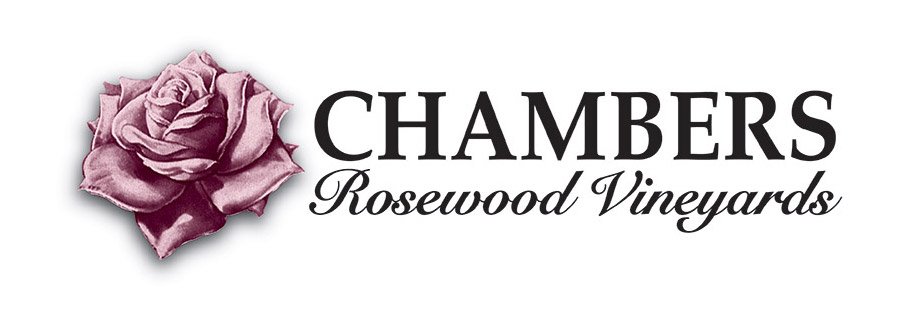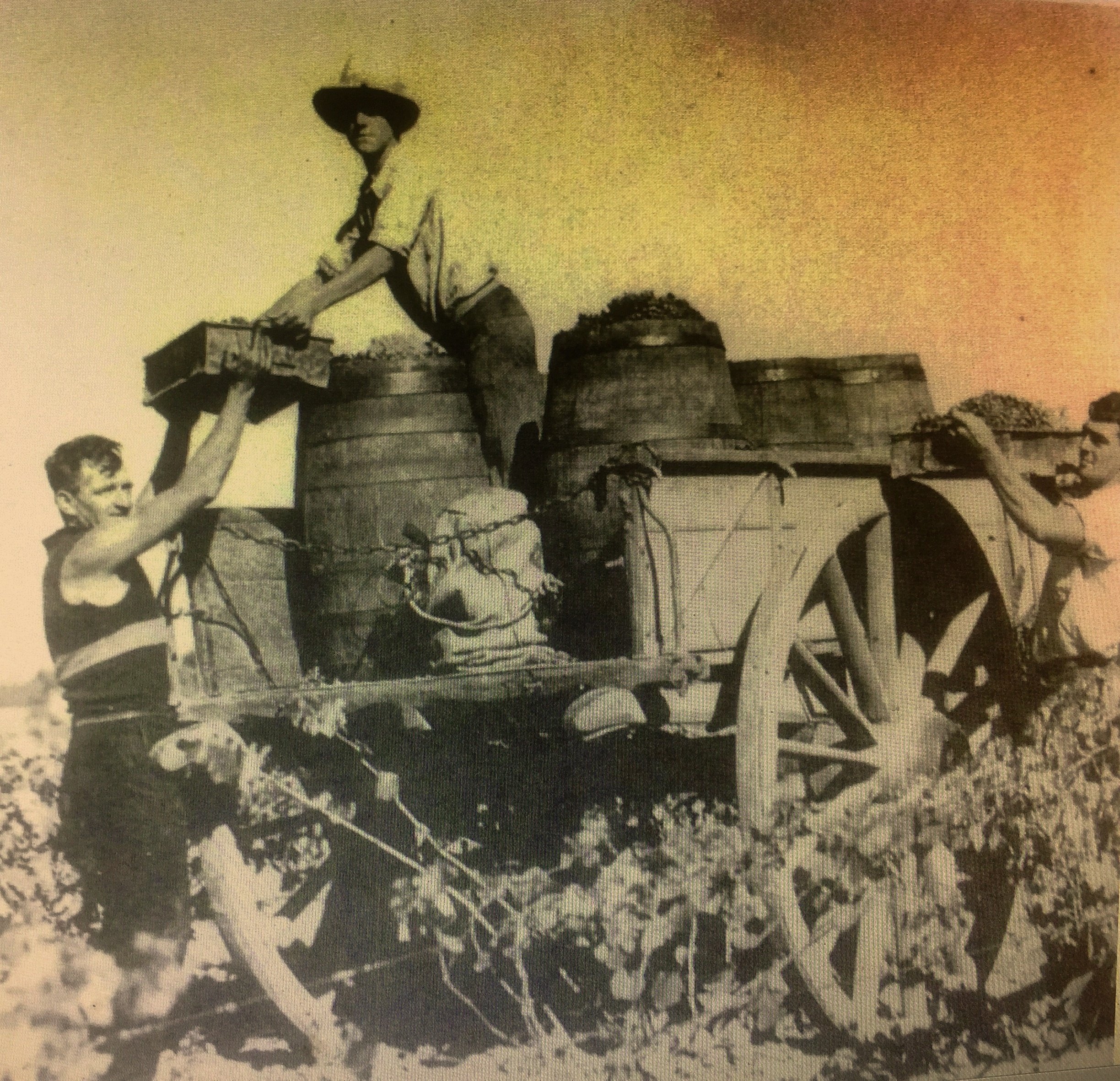
ESTABLISHED 1858
Chambers is a privately owned winery and was established in 1858 by William Chambers who decided to emigrate to Australia after a disagreement with his employer in Norfolk, England. He and his sons; Philip and Jabez, had previously gained experience in viticulture (vineyard management) in France, sponsored by their former employer.
In 1899, Phylloxera was discovered in Rutherglen vines, the result being the entire vine stock being uprooted and burnt.
1858
Established in 1858 by William Chambers emigrated to Australia after a disagreement with his employer in Norfolk, England. He and his sons; Philip and Jabez, came with experience in viticulture (vineyard management) in France.
William initially leased a plot of land from John Foord directly opposite one of the regions earliest vignerons; Anton Ruch. With the help of his son Philip, he planted a rose hedge around the boundary and named the property Rosewood.
With the Chambers knowledge of viticulture and Anton’s winemaking experience, there is a strong likelihood that both parties gained something from their close proximity. This further strengthened by William Chambers negotiating with the Gold Miners on Anton’s behalf, when claims were staked out on each of their properties after the discovery of gold in September 1860. The story is told that Anton locked himself in his bark hut to protect himself and his precious wines from the rowdy miners.
1862
Chambers family purchase the land from John Foord, no doubt aided by the funds provided by the access rights negotiated with the miners. There were many challenges; unknown climatic conditions, vast distances from major markets.
1890
2nd Generation Philip passes away, followed a few days later by his wife and new born baby leaving an 18 year- old William (Will) to bring up the rest of the family and so started Will’s long tenure in charge at Rosewood.
3rd Generation Will sets the foundations of many of the soleras during this period in particular the Muscat and Muscadelle (Topaque). Will’s skill at blending and ability to assess wines was further demonstrated by years of success at wine shows starting in 1901 through to the 1920’s and 30’s with the Muscat, Muscadelle (as a Sweet White Fortified) and Dry Flor wines all being highly successful.
1899
Rutherglen vines struck with Phylloxera, the result being the entire vine stock being uprooted and burnt.
1901
Chambers begins to replant the vineyard using Phylloxera resistant rootstocks from America; the original source of the infestation. The vineyard surrounding the winery comprises of some of the earliest replanting in the area.
Early 1900s
Anton Ruch, originally from Prussia, returns to now modern-day Germany. Chambers purchase the parcel of land that the Winery now resides upon.
1952
3rd Generation Will passes away at the age of 80 and his son and 4th Generation Arthur is diagnosed with cancer, which took his life just a couple of years later leaving his wife Peggy and 7 children.
1959
Generation William (Bill) Chambers returned to Rutherglen from South Australia, after studying winemaking at Roseworthy Agricultural College where he took out the gold medal as dux and worked at Stanley Wine Company during his time away.
Upon his return, Bill had to oversee revitalisation of the vineyard and the return of wine from St Leonards where it had been made for a period in partnership with Frank Herman. Peggy helped run the winery by keeping the books and despatching orders, while Bill’s wife
Catherine took responsibility for the sheep, and in particular the Poll Dorset stud that had been relocated from her family’s property near Benalla. Bill continued to maintain the soleras started by his grandfather continuing to produce high quality Muscat and Muscadelle wines Critics including Jancis Robinson, Robert Parker Jr and James Halliday rate them as some of the best examples of the style.
1986
Catherine Chambers passes away in 1986 after a short battle with cancer leaving Bill and his mother to continue to operate the business.
1989
Bill remarries Wendy and between them with help from Bill’s brother Donald (Don) the wine side of the business saw a period of expansion.
2001
Stephen Chambers takes up the role of winemaker.
A wide range of varieties are grown in the vineyards, with Muscadelle & Muscat being at the forefront. Other varieties include Palomino, Roussanne, Marsanne, Traminer, Tempranillo, Grand Noir, Graciano, Cornifesto, Touriga Nacional & Grenache.
The estate also uses the unique and rare Gouais grape, a parent of Chardonnay and Riesling, along with top-quality Durif, Shiraz, Riesling, Mondeuse Noir & Cinsault (Blue Imperial) to produce luscious wines. The latter along with Muscat & Muscadelle dating back from 1901 -1908 Chambers use large tanks, oak casks & barrels (some casks dating back to the 1800s and as large as 5500 litres) to age and refine our premium fortified wines.
Six Generations of Winemakers
Top: L to R William Chambers, Philip Chambers, William (Will) W.H. Chambers
Bottom: L to Right Arthur (Jerry) Chambers, William (Bill) W.B. Chambers, Stephen Chambers

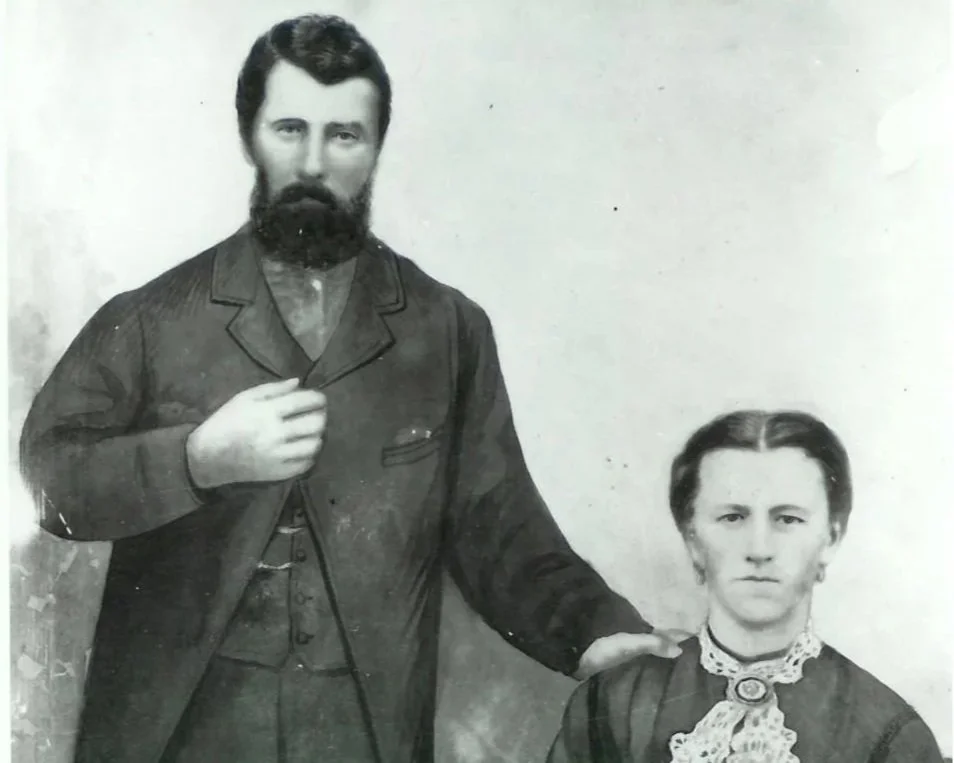
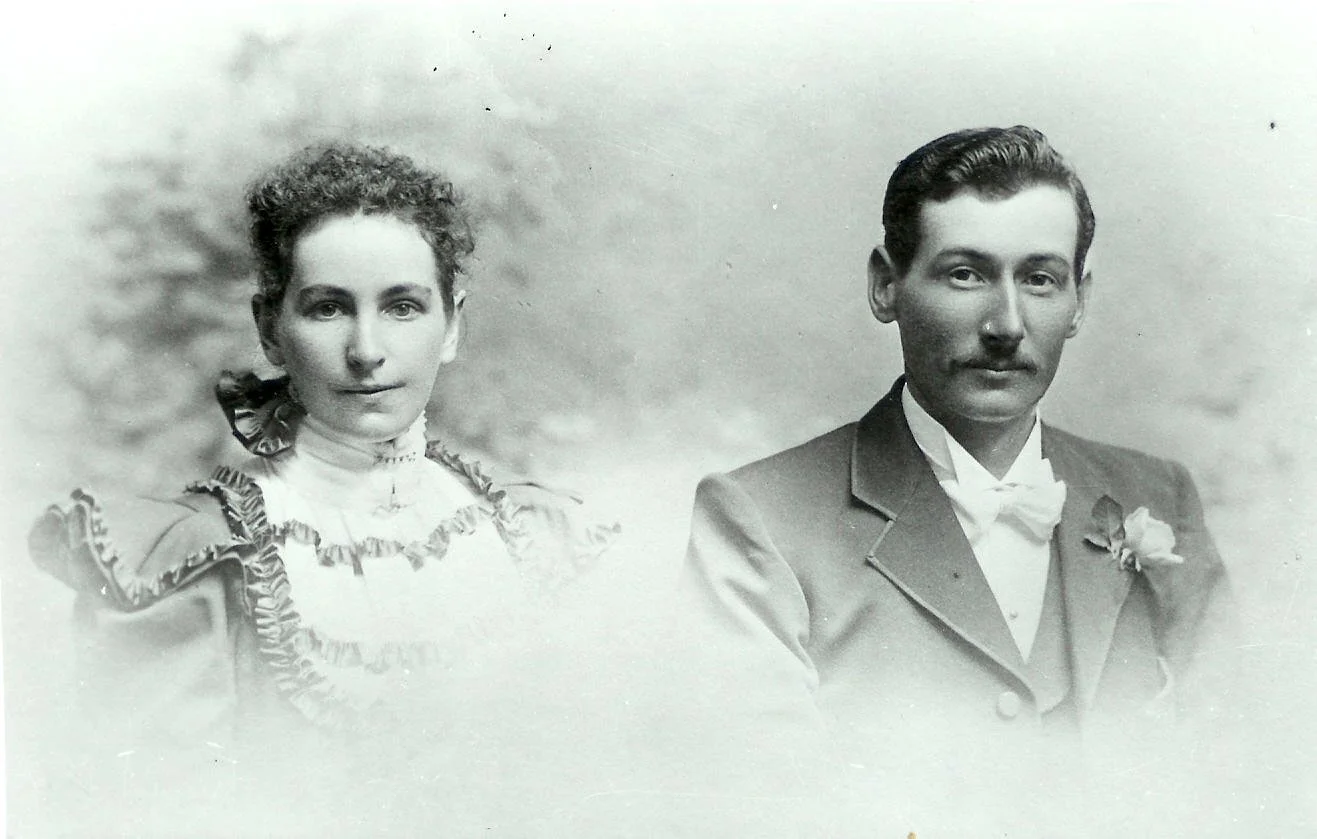


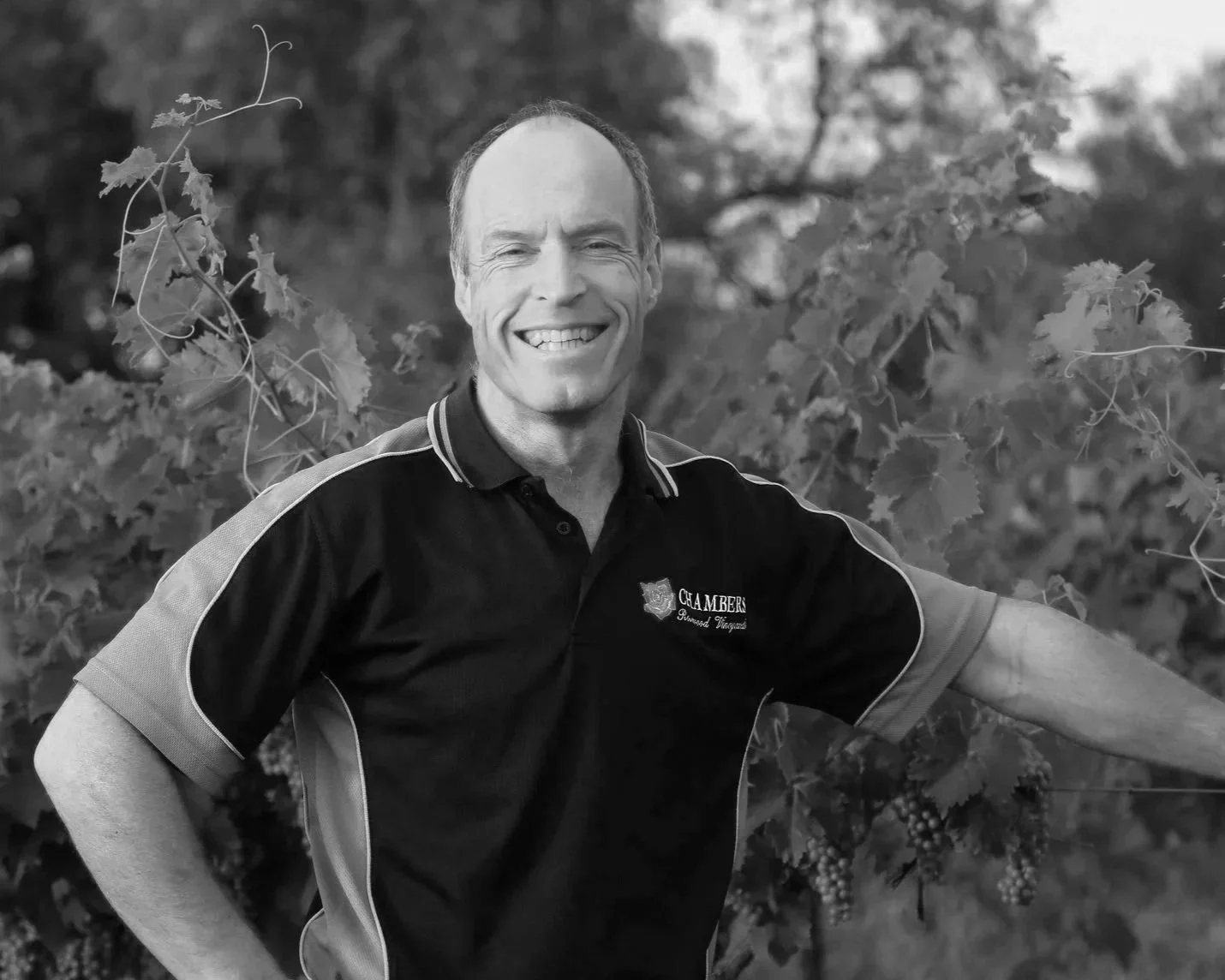
The Vineyard.
Why vines and why Rutherglen?
While the Chambers family arrived in 1858 there were already vines in the area
prior to this.
Early arrivals to the region found that the soil; red loam with clay
(the proportion of clay to loam was dependent upon vineyard site)
was rich enough, and this combined with adequate
rainfall lead to the planting of vines.
While the Chambers family arrived in 1858 there were already vines in the area prior to this.
Indeed, the land was seen to be so fertile that even after the discovery of gold, an early Vigneron; Lindsay Brown, was quoted to utter...
“Dig gentlemen dig but no further than 6 inches, for there is more gold to be found in the first 6 inches than further below”.
For the Chambers family it was natural to plant vines due to the family’s experience in market gardening and viticulture.
The vines today range in age from 120 + to 1 year old and is a mix between dry land (non-irrigated) and irrigated vines. All the vines are trained on a single fruiting wire and are hand pruned using rod and spur (cane pruning).
It is our belief that it gives the best result and allows us to treat each vine individually rather than a mass, as in other pruning systems. The water for the irrigation of the vineyard is a combination of storm water run-off and reclaimed water. The irrigation regime is to maintain growth rather than promote it.
This method was adopted as there is limited water for irrigation and to ensure that there is adequate water supplies at the end of the season when it is imperative to have the vines healthy with active leaves to complete ripening.
